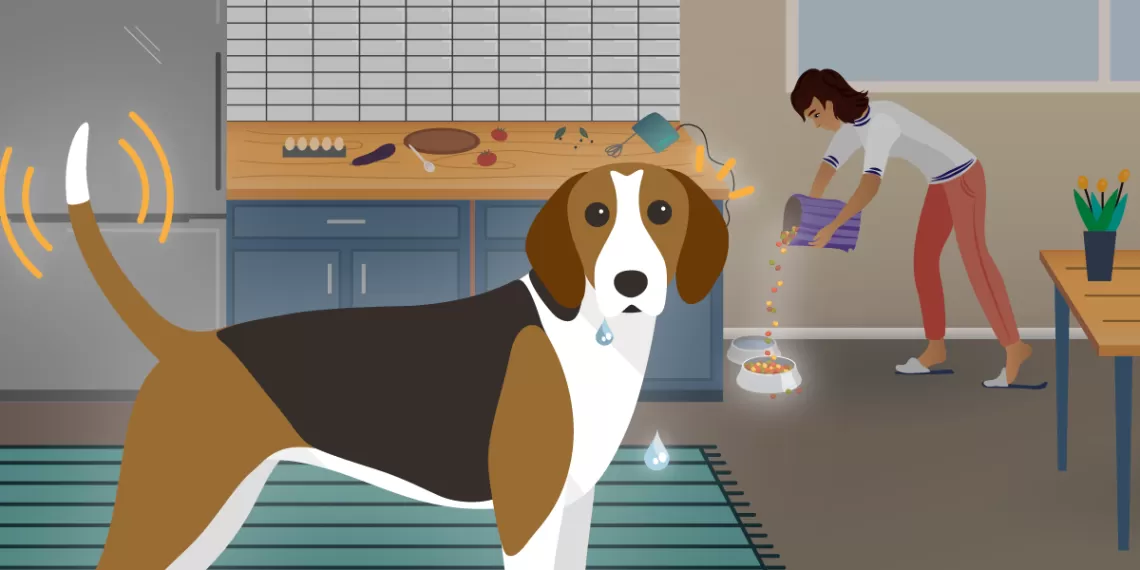
How Jack Michael Expanded Our Analysis of Classical (Pavlovian) Conditioning
And Simultaneously Elicited the Activation Syndrome in Many Students of Behavior Analysis
Jack Michael passed away on November 12, 2020. In Jack’s honor, ABA Technologies, Inc. is pleased to bring you this blog written in 2020 by Thomas Freeman.
In the spring of 1944, a very strange song titled, “Mairzy Doats,” hit number one on the American pop charts. It contained the following lyrics:
"Mairzy doats and dozy doats and liddle lamzy divey.
A kiddley divey too, wouldn't you?"
These lyrics are, of course, complete gibberish—that is, until you learn that a simple translation key exists.
In the fall of 1995, The Behavior Analyst published Jack Michael’s article, “What every student of behavior analysis ought to learn: A system for classifying the multiple effects of behavioral variables.” In that article he wrote the following:
“Similarly, the CS can be seen to function both as a CE and, in higher-order conditioning, to transfer its effect to another neutral stimulus, a relation that can be symbolized as CC/CE.”
And
“There are also three behavioral effects of the feeder sound . . . As an auditory CE, it elicits salivation. As an auditory CC/CE (conditioned conditioner of a conditioned elicitor), it conditions the dog’s salivation response to any stimulus that immediately preceded the feeder sound.” p.277
Got that?
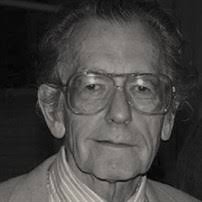 Jack Michael is one of the most brilliant men ever to grace the field of behavior analysis. He engaged in deep and elegant conceptual analysis, and significantly expanded our understanding of the nature of behavior. But his written explanations tend toward an economy of language: compressed and precise. They are seemingly unconcerned with providing the reader with a comforting hand to hold as he leads the way up the steep and difficult path to a spectacular if hard-won analytical vista.
Jack Michael is one of the most brilliant men ever to grace the field of behavior analysis. He engaged in deep and elegant conceptual analysis, and significantly expanded our understanding of the nature of behavior. But his written explanations tend toward an economy of language: compressed and precise. They are seemingly unconcerned with providing the reader with a comforting hand to hold as he leads the way up the steep and difficult path to a spectacular if hard-won analytical vista.
His contributions to the field of behavior analysis are vast, particularly in his complex analysis of verbal behavior—but his other contributions are similarly important. One such contribution came in the form of his taxonomy of behavioral functions, mentioned above. Many students of behavior analysis find one particular section of that taxonomy to be particularly challenging: the section on respondent relations.
In 1897, Ivan Pavlov introduced the terms, unconditional stimulus (now more commonly called an unconditioned stimulus, or US) and conditional stimulus (aka, conditioned stimulus, or CS) in his first article on respondent conditioning in dogs. Nearly a century later, Michael realized that both unconditioned stimuli and conditioned stimuli exhibit several different functional effects during respondent conditioning (i.e., the conditioning of reflex responses). In science, different functional processes require different names, to enable precise analysis and communication. Thus, Michael gave each separate functional effect a specific and very logical name. However, some of these new names—names like, “Unconditioned conditioner of a conditioned elicitor,” or the head-spinning, “conditioned conditioner of a conditioned conditioner” have students of behavior analysis asking, “What the heck is this guy talking about?”
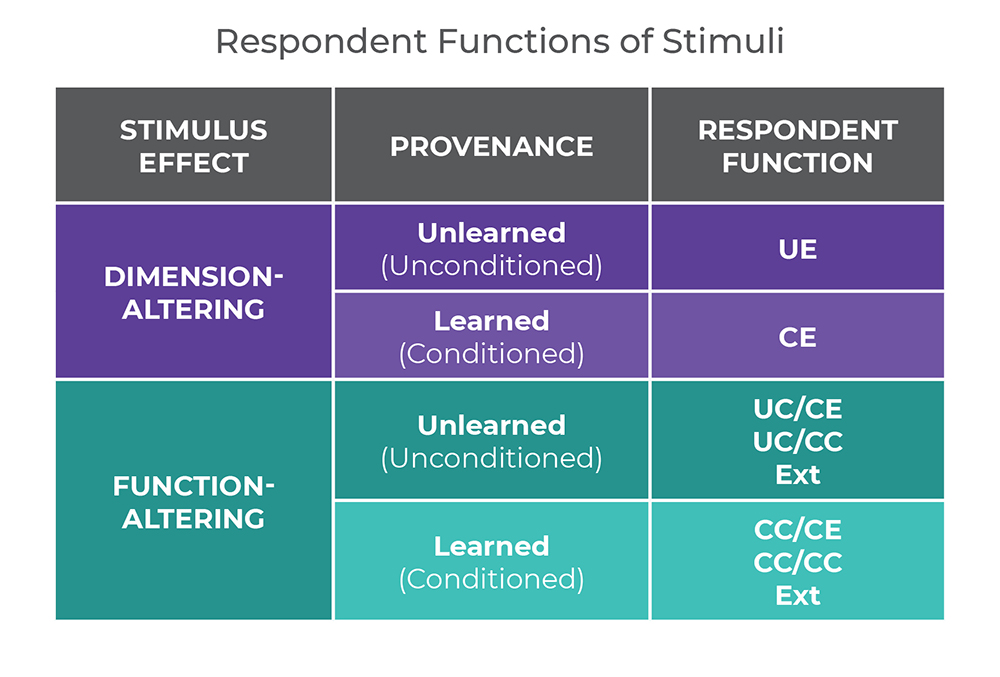
So, our task here is to dissect these new terms and show how easy they are to understand, once you know the secret to their construction.
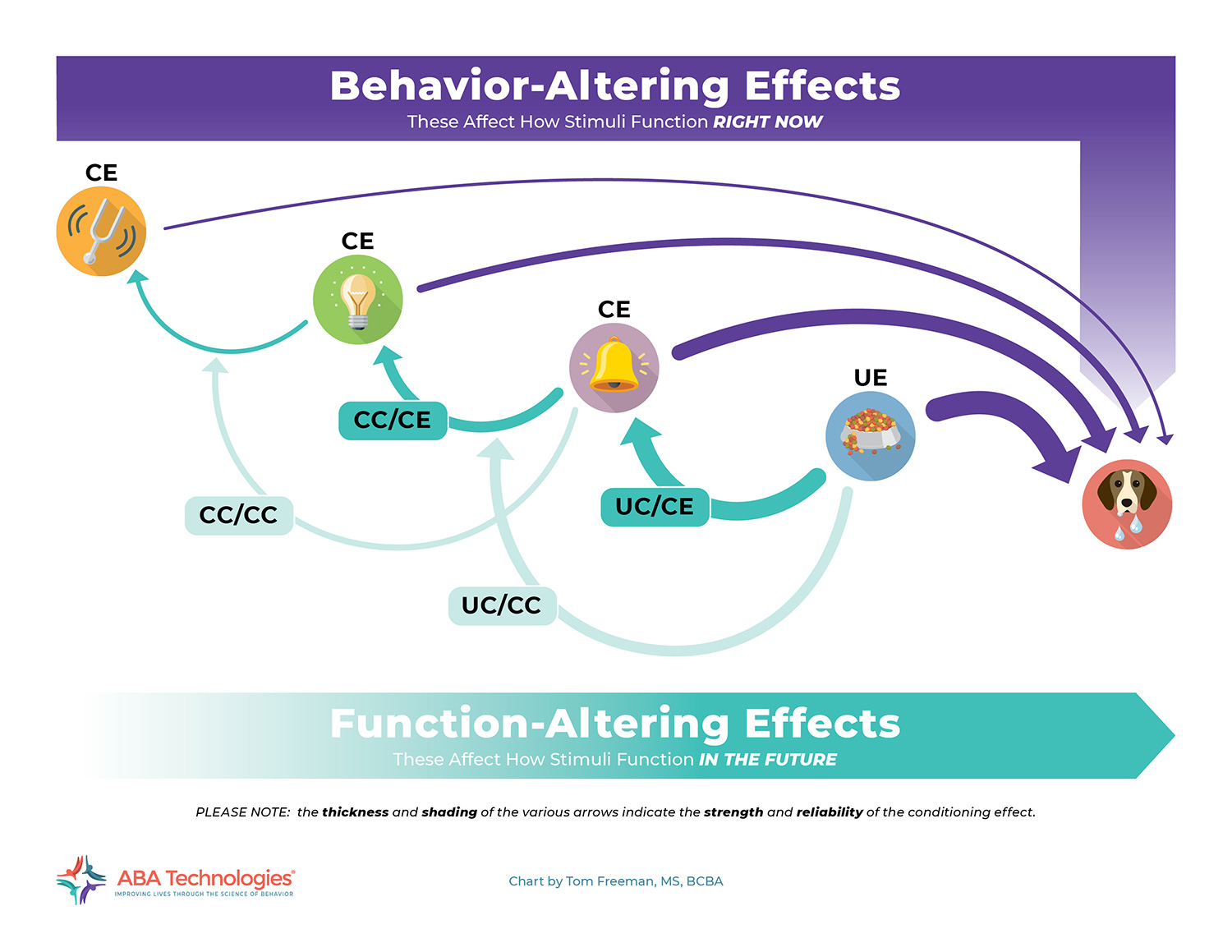
Pavlov’s Unconditioned Stimulus (US)
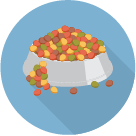
 Pavlov called a stimulus that elicits a reflex response without prior learning an “unconditioned stimulus.” Humans exhibit very few reflex responses—blinking to a puff of air, salivating to food on the tongue, sneezing when something gets into your sinuses. Some, like the Babinski reflex (toes fan out when the foot is touched), even disappear as the human baby grows. All reflexes begin as unconditioned, meaning they occur automatically, without having to be learned. They are physiological responses to external eliciting stimuli, hard-wired into the body of every member of the species (unless there is some kind of physical or genetic damage interrupting the reflex).
Pavlov called a stimulus that elicits a reflex response without prior learning an “unconditioned stimulus.” Humans exhibit very few reflex responses—blinking to a puff of air, salivating to food on the tongue, sneezing when something gets into your sinuses. Some, like the Babinski reflex (toes fan out when the foot is touched), even disappear as the human baby grows. All reflexes begin as unconditioned, meaning they occur automatically, without having to be learned. They are physiological responses to external eliciting stimuli, hard-wired into the body of every member of the species (unless there is some kind of physical or genetic damage interrupting the reflex).
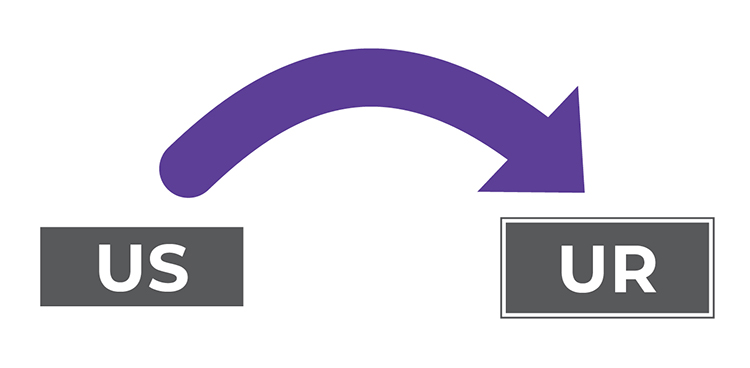
Pavlov’s Conditioned Stimulus (CS)

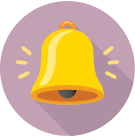 Although Pavlov’s original intent was to study the physiology of salivation, when he noticed the dogs beginning to salivate to environmental events other than food, he went on to research for many years that phenomenon for which he became famous—the conditioned reflex. Here, a new “neutral” stimulus elicits the reflex response. This requires experience on the part of the organism—in other words, it is a learned (conditioned) reflex. For example, food on the tongue unconditionally elicits salivation. But when food is very regularly presented immediately after, let’s say, the sound of a bell, eventually, the bell will elicit salivation in the absence of food. When people refer to “Pavlov’s dogs,” this is what they are talking about. This is also known as “classical conditioning.”
Although Pavlov’s original intent was to study the physiology of salivation, when he noticed the dogs beginning to salivate to environmental events other than food, he went on to research for many years that phenomenon for which he became famous—the conditioned reflex. Here, a new “neutral” stimulus elicits the reflex response. This requires experience on the part of the organism—in other words, it is a learned (conditioned) reflex. For example, food on the tongue unconditionally elicits salivation. But when food is very regularly presented immediately after, let’s say, the sound of a bell, eventually, the bell will elicit salivation in the absence of food. When people refer to “Pavlov’s dogs,” this is what they are talking about. This is also known as “classical conditioning.”
Note that the elicited response does not change, whether elicited by the food or the bell. It is still salivation. What changes in the stimulus that elicits it. A puff of air into the eyeball elicits blinking, with no learning needed. But contingently pair a “click” sound with the puff of air, and eventually, the “click” alone will elicit a blink. The click is now a “conditioned stimulus” because it now elicits the reflex response (blink), but only after having been paired with the puff of air (the “unconditioned stimulus.”) This is conditioning, and it leads to learning. The body learns to blink to the “click”; the body learns to salivate to the bell.
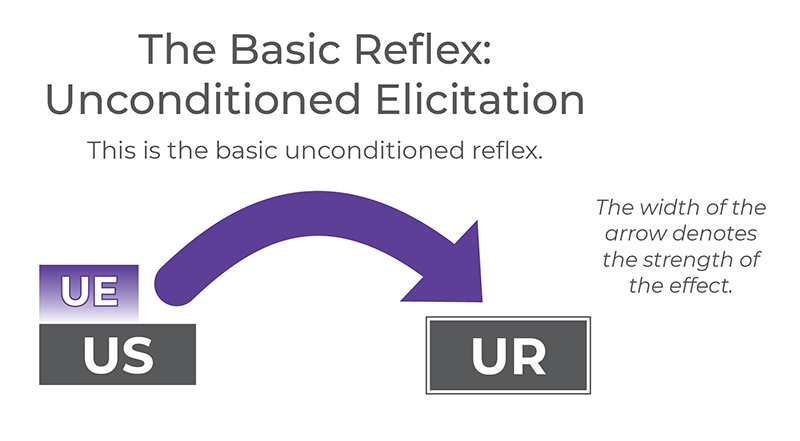
Michael’s Unconditioned Elicitor (UE) and Conditioned Elicitor (CE)
Function #1: The Behavior-Altering Effect of the US and CS
In Pavlov’s terms, an unconditioned stimulus (food) elicits an unconditioned response (salivation). Michael’s deeper analysis revealed that in relation to the reflex response (salivation), the unconditioned stimulus (food) functions as an elicitor (E). Because the food is an unconditioned stimulus (US), Michael clarified that when it elicits salivation, the food (US) functions as an “unconditioned elicitor” (UE). Pavlov’s conditioned stimulus (bell) elicits a conditioned response (salivation). Thus, in Michael’s analysis, when the CS (bell) elicits the reflex response (salivation), the CS functions as a “conditioned elicitor (CE).”
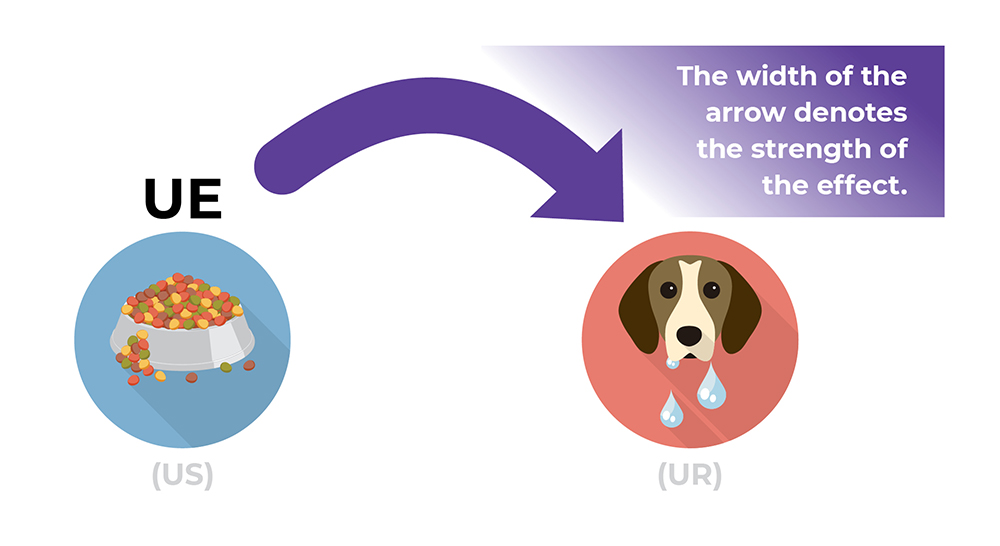
Behavior-Altering Effect
This eliciting function is what Michael termed the “behavior-altering effect” of the unconditioned stimulus (food) or conditioned stimulus (bell). This does not mean that the behavior (salivation) is altered into some other behavior. It simply means that the reflex response is being elicited—first, it is not happening, then it is. In other words, the likelihood of the occurrence of the behavior (salivation) is altered by the presentation of an antecedent stimulus (either the presentation of food (UE) or the ringing of the bell (CE)). Let’s say that again. “Behavior-altering” means the likelihood of the behavior occurring is altered.
Note that the “behavior-altering effect” is a stimulus-on-behavior effect. The occurrence of a particular stimulus has an immediate effect on the likelihood of the behavior. Notice also that when we look at the terms, UE and CE. The 1st letter (U or C) refers to what kind of stimulus it is. Is the eliciting effect of the stimulus genetically based, i.e., “unlearned” (i.e., unconditioned—U)? Or is the eliciting effect of that stimulus derived as a result of learning/experience (i.e., conditioned - C)? The 2nd letter (E) refers to what that stimulus does. In this case, it elicits (E).
Remember this phrase, “What it is, and what it does.” It will apply to EVERY 2-letter designation for each stimulus in Michael’s analysis, and as you will see, it applies to every 4-letter term as well. Next comes the part that confuses nearly everyone. And yet, once you see the key, you will realize how straightforward it is. I promise.
Michael’s 4-Letter Terms: The UC/CE & CC/CE and the UC/CC & CC/CC
Functions #2 and #3: Function-Altering Effects of the US and the CS
At this point, I could reasonably insert Edvard Munch’s painting, “The Scream,” 😱 but relax. This is so logical that you will see it. First, let’s define the “function-altering effect.” This is seen when one stimulus (#1) alters the way a second stimulus (#2) functions. It is a stimulus-on-stimulus effect. Stimulus #2 develops a new functional effect after being paired with Stimulus #1. Stimulus #2 has its function altered.
Behavior-altering = Stimulus-on-behavior effect
Function-altering = Stimulus-on-stimulus effect
Next, let’s look at the structure of every one of Michael’s new 4-letter terms. Each 4-letter term names one of the function-altering effects exerted by either a US or a CS on a second stimulus. In other words, the name describes how a US or CS changes the function of a 2nd stimulus. It describes a stimulus-on-stimulus effect—a function-altering effect. Thus, each 4-letter term refers to a functional effect of either a US or the CS in respondent conditioning. If the 1st letter of the 4-letter term is “U,” then it refers to an effect of a US on a second stimulus; if the 1st letter is a “C,” it refers to an effect of a CS on a second stimulus.
The 4-letter terms are structured as follows:
- Stimulus 1 / Stimulus 2 (e.g., UC/CE) [ IMPORTANT NOTE: For clarity, letters in each 4-letter term below will be individually numbered: e.g. U1C2/C3E4 ]
- First two letters = Stimulus 1
- Second two letters = Stimulus 2
- Example: Stimulus 1 = U1C2 / C3E4 = Stimulus 2.
- Stimulus 1 is doing the conditioning of / Stimulus 2, which is being conditioned.
- Stimulus 1 is ALWAYS a conditioner, and
- Stimulus 2 is ALWAYS being conditioned (by stimulus 1).
- Thus, the middle two letters are ALWAYS “__C2/C3__.”
- Which reads: “The (---)1 Conditioner2 / of a Conditioned3 (---)4”
- Only the first and last letters change.
- Stimulus #1 ALWAYS conditions Stimulus #2 to exhibit some new function.
UC/CE & CC/CE: Conditioning the 2nd Stimulus to Become an Elicitor (E)
The UC/CE
Let’s continue numbering the letters: U1C2 / C3E4. When you pair the food (US) with a bell (CS), the bell eventually elicits salivation. Why? Because the bell was paired with the food (in a procedurally correct manner). Pairing is the key operation in respondent conditioning. Stimulus 1 is paired with Stimulus 2. Over time, this changes how Stimulus 2 functions. Stimulus 1 (food) changes the function of the Stimulus 2 (bell), eventually resulting in Stimulus 2 eliciting the reflex response (salivation). The food has conditioned the bell to elicit salivation. The bell has become a conditioned elicitor (CE).
Let’s look more closely at the food (what it is and what it does). Food elicits salivation without prior learning. Thus, it is an unconditioned stimulus (US) in Pavlov’s terminology. When food (the US) elicits salivation, Michael names it by its functional effect, calling it an unconditioned elicitor (UE). But when food is paired with a bell, it has an effect on the bell—but food surely does NOT elicit the sound of a bell. No. Through pairing, the food conditions (C) the bell —to elicit salivation. So, food is an unconditioned (U) stimulus functioning as a conditioner (C) of the bell. Thus, food (stimulus 1) is the unconditioned conditioner (UC) of a bell (stimulus 2).
And what do we call the bell? Remember: What it is, and what it does. What it is: The bell is conditioned by the food, so it must be a conditioned (C) something. What it does: In this case, the bell is conditioned to function as an elicitor (E) of salivation. Therefore, in this case, we call the bell a conditioned elicitor (CE).
Thus, the food (Stimulus 1, Pavlov’s US) is functioning here as an unconditioned conditioner (UC) of the bell (Stimulus 2, Pavlov’s CS), turning the bell into a conditioned elicitor (CE). The food functions as an unconditioned conditioner of a conditioned elicitor: UC of a CE. The food is a UC/CE. You see? The first two letters refer to Stimulus 1, doing the conditioning: food acting as the UC. The second two letters refer to Stimulus 2, being conditioned to do something: bell becoming a CE.
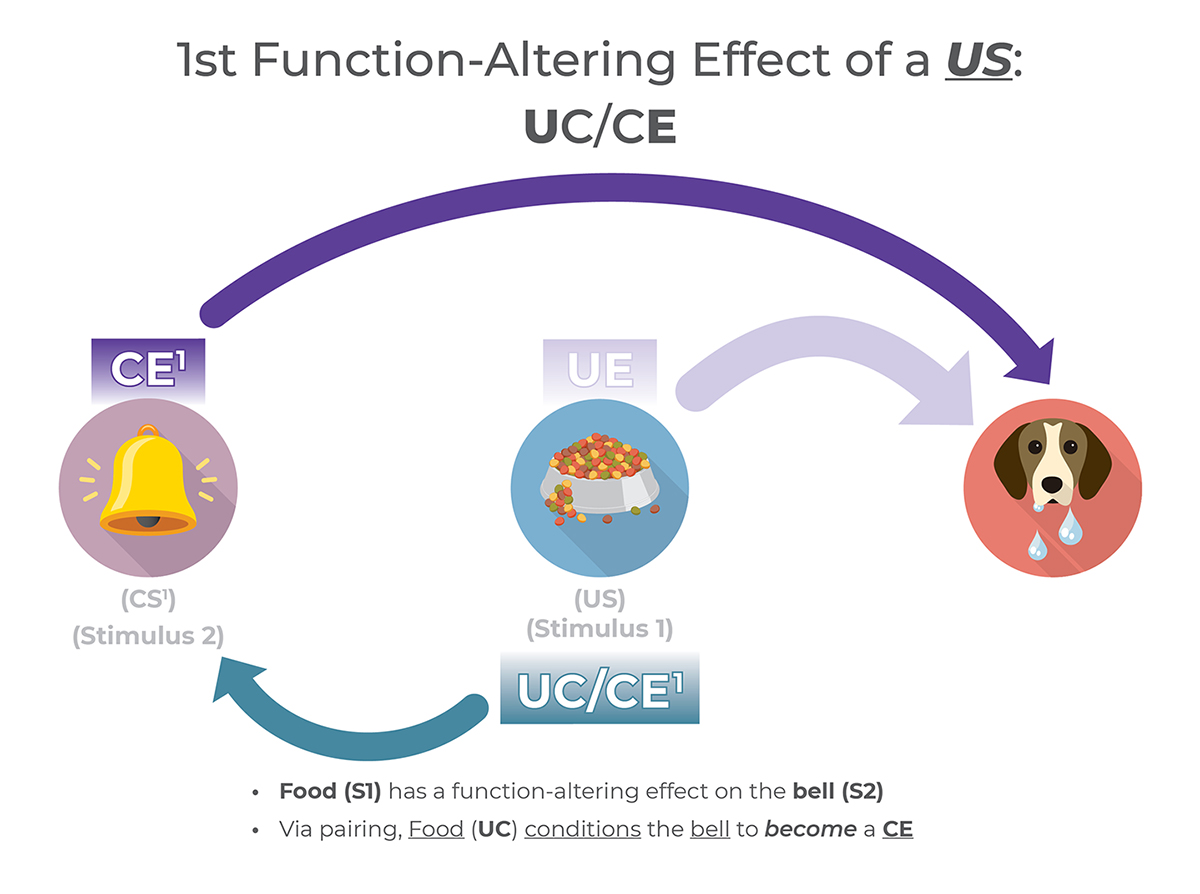
The CC/CE
Let’s number the letters again here: C1C2 / C3E4. In higher-order conditioning, you can pair a strongly conditioned stimulus – CS (for example, a bell) – with a new neutral stimulus (e.g., a light). In this case, we call it 2nd order conditioning since the light is 2 steps away from the unconditioned reflex (food-salivation). The bell in our scenario would be 1st order. The light can be conditioned by the bell to elicit the reflex response: salivation.
Stimulus #1, The Bell
- What it is = It’s a conditioned stimulus (C1)
- What it does = It conditions (C2) the 2nd stimulus—the light
Stimulus #2, The Light
- What it is = It is a conditioned (C3) something* (*Conditioned to do something)
- What it does = In this case, it eventually elicits (E4) salivation.
Stimulus #1: What it is: (C1) and What it does: (C2) → C1C2
Stimulus #2: What it is: (C3) and What it does: (E4) → C3E4
Bell (C1) conditions (C2) a light to elicit salivation.
Bell is a conditioned conditioner (C1C2) of a light as a conditioned (C3) elicitor (E4).
The bell functions as a CC/ of the light as a CE.
The bell functions as a CC/CE (which describes its function-altering effect on the light).
1st Stimulus does the conditioning / 2nd Stimulus is being conditioned (to do something else). But . . . what can that second stimulus be conditioned to do besides elicit the reflex response? It can be conditioned to condition yet another stimulus.
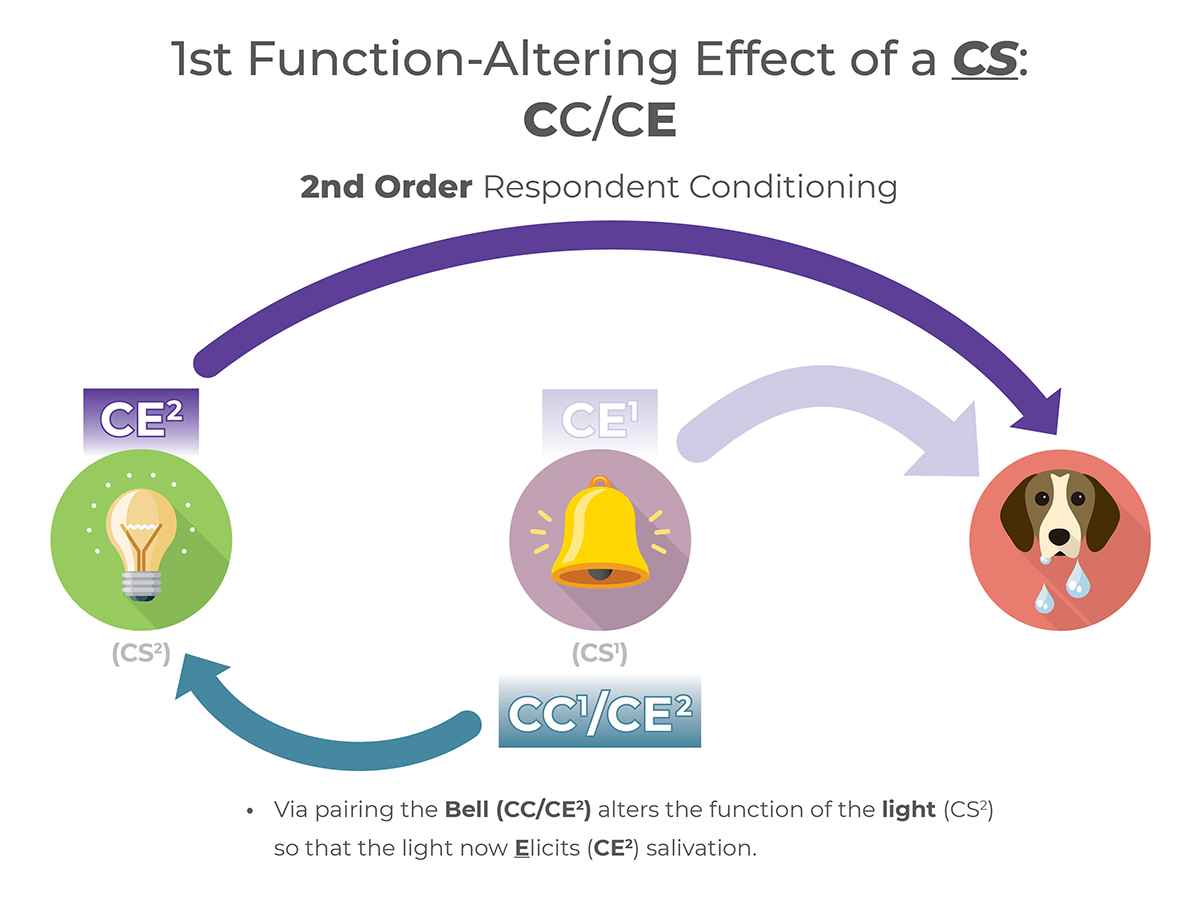
UC/CC and CC/CC: Conditioning the 2nd Stimulus to Become a Conditioner of Yet Another Stimulus
The UC/CC
Food elicits salivation: Food is a UE. Food (U) conditions (C) bell (C) to elicit (E) salivation: Food is a UC/CE. Bell (C) conditions (C) light (C) to elicit (E) salivation: Bell is a CC/CE. So how is the bell able to condition the light? What paired stimulus gave the bell the capacity to condition any other stimulus? The food.
When food is paired with the bell, it enables the bell to condition a completely new and different neutral stimulus—in this case, a light. The food (U1) conditions (C2) the bell (C3) to be able to condition (C4) the light as an elicitor. The food, in this case, functions as a UC/CC. Pairing food (stimulus 1) with the bell (stimulus 2) gave the bell the capacity to function as a conditioner (of the light). The food (U) conditions (C) the bell (C) to itself become a conditioner (C). The food here functions as a UC/CC.
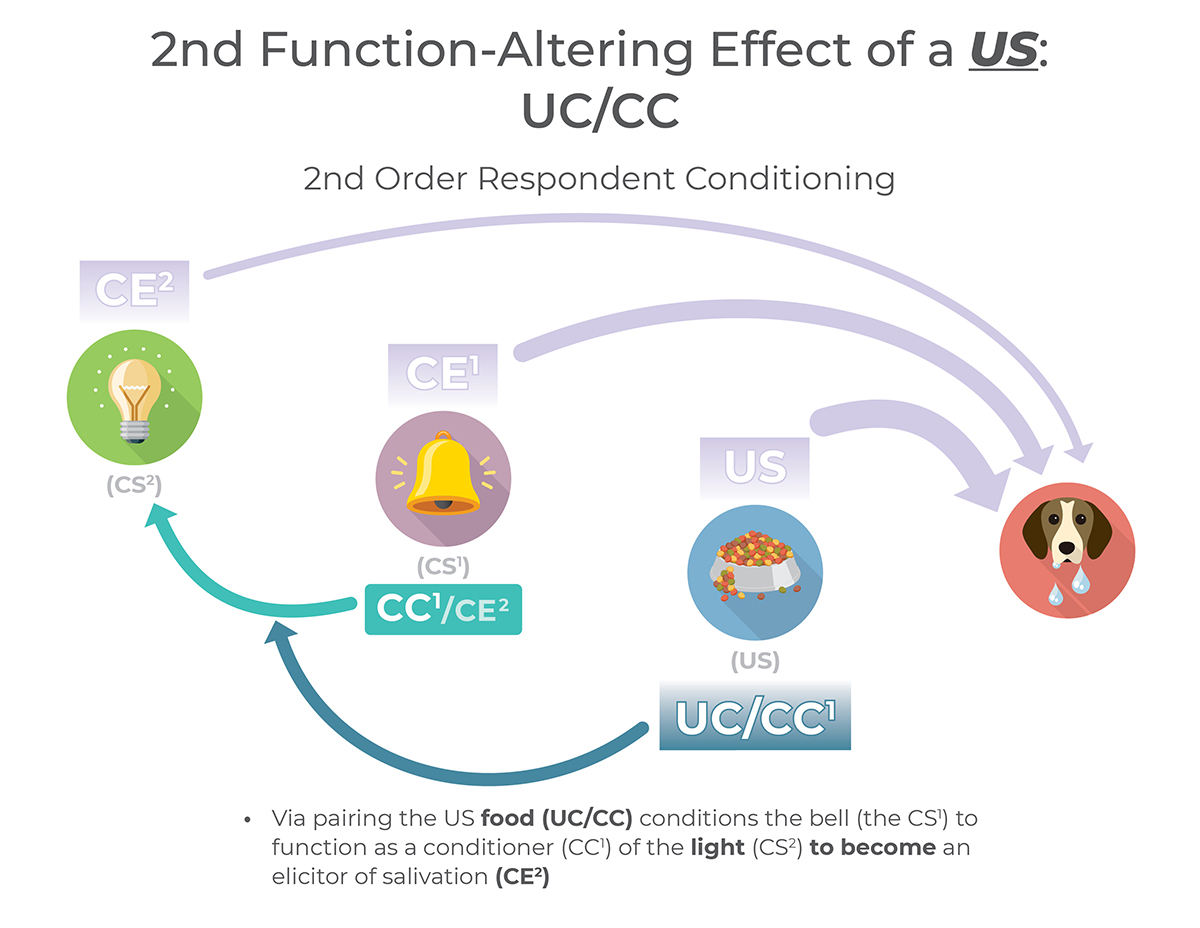
The CC/CC
So here we are. The bell conditions the light to elicit salivation. The bell is a CC of the light as a CE. But what else can the bell condition the light to do?
First, the light can condition a 3rd neutral stimulus (e.g., a tone) to elicit the reflex response (salivation). This is known as third order-conditioning—the light functioning as our old friend, the conditioned conditioner of a conditioned elicitor: the CC/CE.
Light (C1) conditions (C2) / a tone (C3) to elicit (E4) salivation (conditioned response).
What it is. What it does. / What it is. What it does. The tone is 3 levels of conditioning away from the food—thus “third-order conditioning.” But what enabled the light to function in this way? The light had been paired with the bell.
The light was, in fact, conditioned by the bell, not only to elicit salivation as a CE but to act as a conditioner of the tone.
The bell (C1) acts as a conditioner (C2) of the light, altering the function of . . .
the light (C3), and giving it the capacity, in this case, to act as a conditioner (C4) of . . .
the tone, which eventually becomes an elicitor of salivation (CE).
Stimulus 1: The Bell:
- What it is: Conditioned (C1) by a US (the food)
- What it does: Acts as a Conditioner (C2) of the light
Stimulus 2: The Light:
- What it is: Conditioned (C3) by a CS (the bell)
- What it does: Acts as a Conditioner (C4) of a new CE (tone as an elicitor of salivation).
Bell is a conditioned (C1) conditioner (C2) /of light as a conditioned (C3) conditioner (C4). Here, the bell functions as a CC/CC. Still a tongue twister perhaps, but it is highly logical and even descriptive, right?
Pavlov’s Structural Version: The Bell (CS1) conditions the light (CS2) to condition the tone (CS3) to elicit salivation.
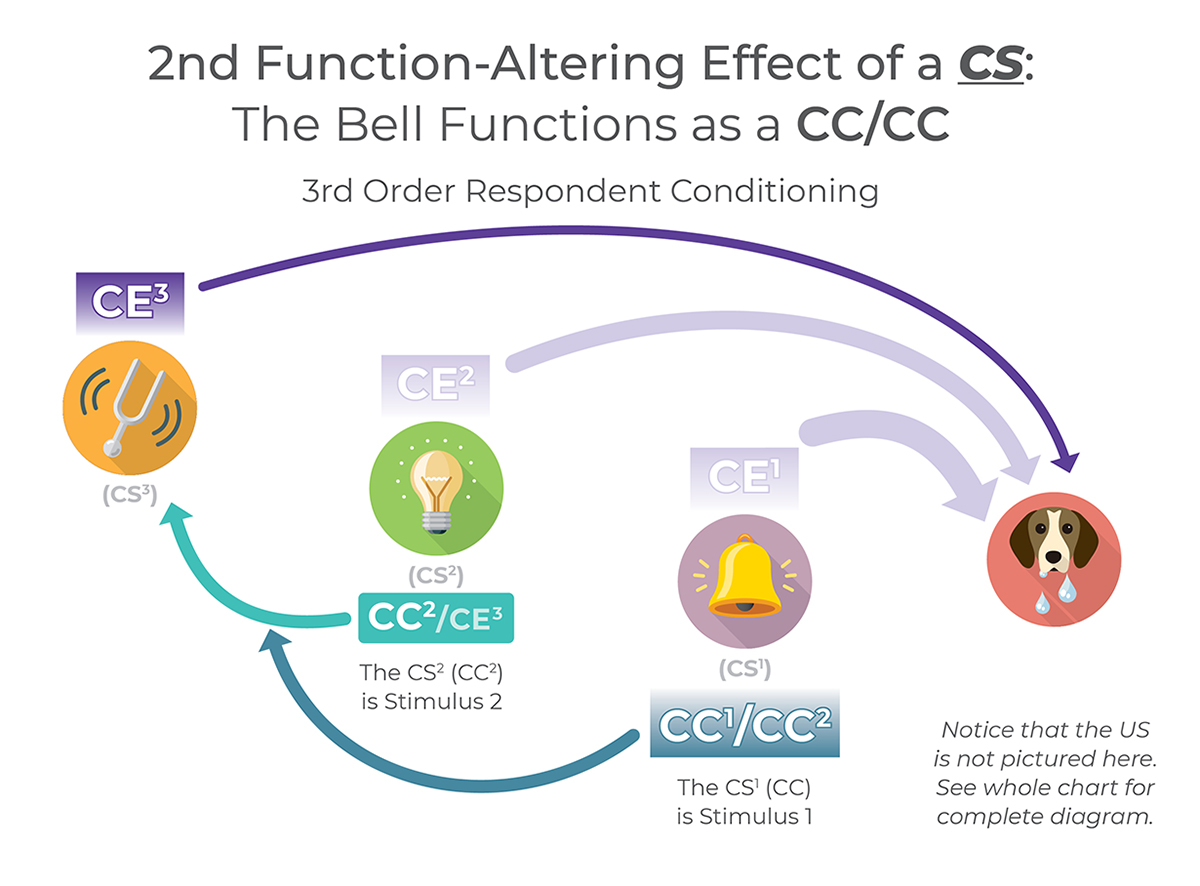
Michael’s Functional Version: The Bell (CC1/CC2) conditions the light, so that the light (CC2/CE3) can now condition the tone (CE3) to elicit salivation.
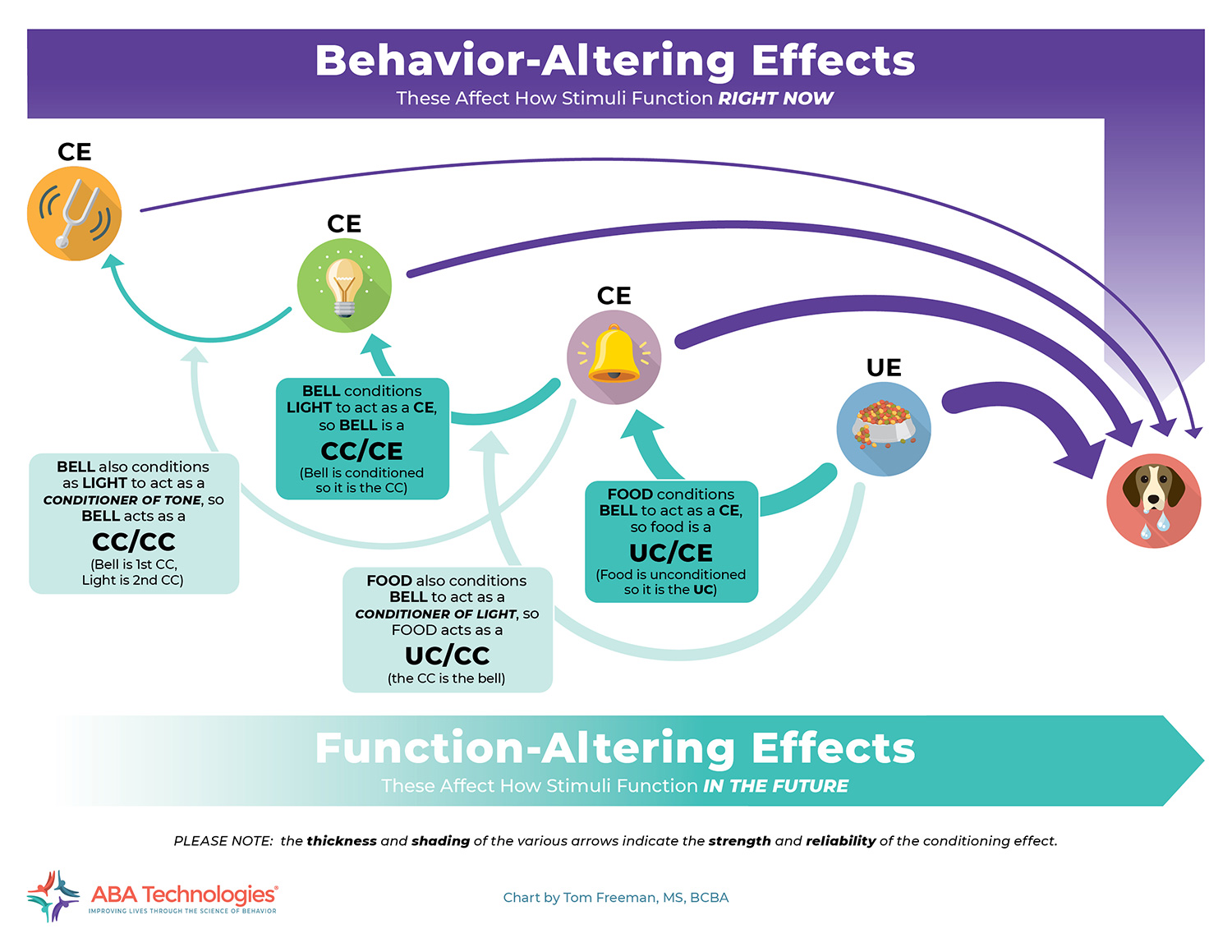
Which finally brings us back to “Mairzy doats.” If you are too young to be familiar with this silly song from the WWII era, here is the key to the translation. Just sound it out more slowly.
Mairzy doats and dozy doats and liddle lamzy divey.
A kiddley divey too, wouldn’t you?
Mares eat oats and does eat oats and little lambs eat ivy.
A kid’ll eat ivy too, wouldn’t you?*
* Whenever mares or does eat oats, or lambs or kids eat ivy, they will certainly reflexively salivate when the food hits their tongues – and probably begin to salivate as a conditioned reflex at the sight of the plants as well. All this means, as we all now know, that:
Mares eat UEs, and does eat UEs, and little lambs eat UC/CEs
A kid will eat UC/CEs too, and probably wooden shoes as well.




